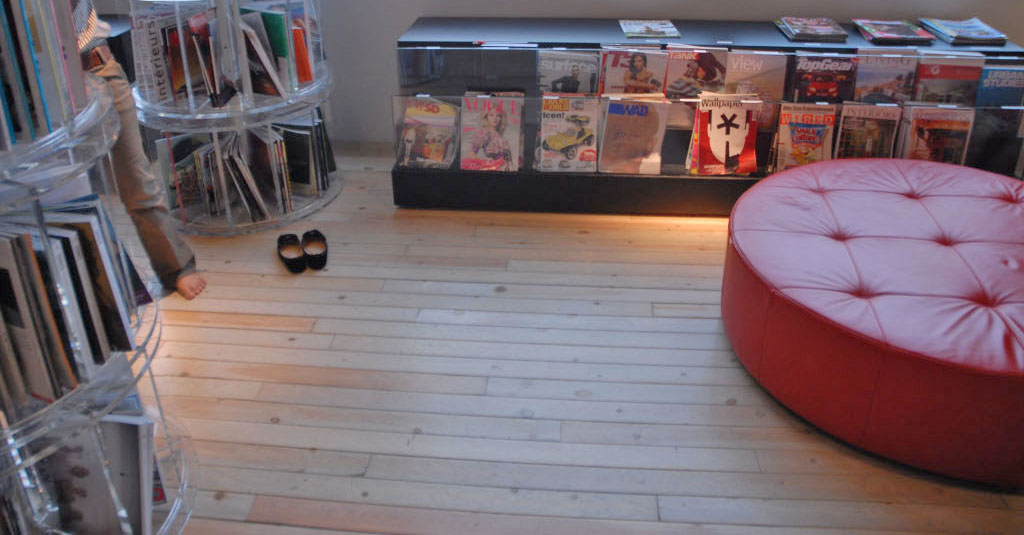As with Japan its common to take off your shoes entering a Thai apartment. A foowear behaviour extending into this workplace – a library worker pads around the stripped floor of the Thai Creative and Design Center building prior to opening.
Given that this is a space trodden by members of the shoes-wearing public to what extent does this behaviour assume that there hasn’t been much shoes wearing traffic since it was last cleaned? (How) will her behaviour change as the building infrastructure and worn materials are incresingly able to gather information on the things they interact with? For example? – exactly who has walked where in this building, the type of footwear they were wearning, and the (bacterially tranmissive) stuff they have come in contact with prior to being here.
Who is motivated by what reasons to ‘raise awareness’ of the issue germ transmission in public spaces? (and then of course provide a ‘solution’ to meet the ‘need’). And how might architects and urban planners redesign human flows through buildings to contain or affect the flow of the stuff we carry on the soles of our feet?
A full day of workshops with local designers, followed by a night conducting street research. For once I’m happy to not be out there during the midday heat (35 degrees yesterday) and happily bouncing off the creative energy of the team.
